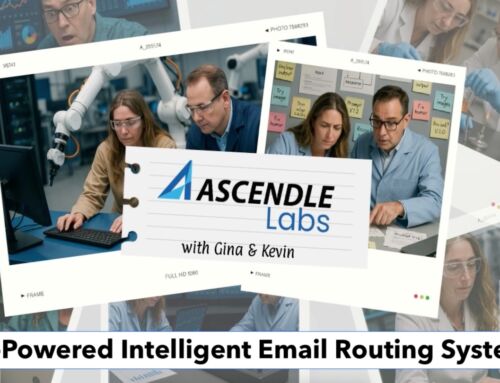What’s the first thing you want to do when you get a great idea for a software app?
You want to protect it, right?
Wrong.
Although intellectual property rights are important, too many companies focus on protecting those rights – rather than developing and testing their ideas.
Don’t get me wrong – it’s not a bad thing to receive a patent for your software, a trademark for your brand name, or even a copyright for your written materials. But when you focus on those things and set all your expectations up front because of them, that’s when IP rights can be a hindrance.
To illustrate, here are a few ways in which pursuing intellectual property rights can hinder your business…
Time and Costs of Filing for IP
It takes time to file for trademarks, patents, and copyrights. Time to investigate existing claims, time to prepare all the forms and documents, and then time to wait. And wait. And wait.
Many companies underestimate the time it takes to receive their intellectual property protection. According to Gerben Law Firm, PLLC you should budget at least one year just to receive a trademark. A software patent can take three to six times that length. Which means you’ll either be starting your project before those intellectual property rights are issued anyway, or you’ll be watching someone else get your idea out to market first.
Even if you take the waiting out of the equation – if you start developing as soon as you receive your filing receipt – there’s still a lot of time and expense involved in those filings.
First, you’ll need to pay all those people preparing and researching the documentation you’ll need to explain your software – including management, IT staff, and consultants. Second, you’ll need to pay the lawyers and United States Patent and Trademark Office (USPTO) fees to prepare and apply for a patent. For software apps, IPWatchdog estimates these costs will start around $18,500 and then go up depending on a variety of factors. And third, you have to consider the opportunity costs of all those people involved in the filing, and what they could be doing instead.
Revealing Your Hand Too Soon
Intellectual property filings are public documents.
I think I should repeat that, with emphasis: intellectual property filings are public documents.
Which means your competitors can see them. True, there are some safeguards around this. The USPTO, for example, will keep your application hidden for 18 months after your initial filing date. But there are ways around this, with IPWatchdog claiming that more than half of all patent applications are made public within one year.
So what goes into that patent application? Plenty. After all, you need to explain what you’re filing for in enough detail that it can be protected. And then that info will eventually become a matter of public record – whether you’ve launched the app or not.
A large competitor can “catch up” quick once they see your application and decide to make a move on it. And while you might think the patent protects you from competition, a creative competitor will find ways to steal your idea and modify it just enough that your patent rights won’t apply. And since there’s a huge debate raging about how enforceable software patents even are these days, it’s difficult to say how much protection your intellectual property rights will even provide.
Looking Backward Instead of Forward
When you’re driving an app to market, you always want to be looking and moving forward. But when you focus on intellectual property rights, the opposite occurs.
Companies overly concerned with intellectual property rights tend to spend a lot of time looking over their shoulders at the competition. Instead of chasing down what’s truly important – the needs of customers – these companies are limiting themselves. They’re expending resources hiding their progress. They’re being conservative with communication and the flow of information. They’re trying to control access to the public – rather than allowing that access to drive their results.
Locking Yourself In
When you file a patent, you’re describing an app the way you think it should be – often before any real customer feedback or market testing.
In a normal Scrum-based software development approach, you take your cues from your feedback and respond quickly to immediate business needs. But that shifts when you’ve already laid out what your app is going to be by applying for a patent.
With a patent application in process, the natural tendency is to fulfill that vision… even if your feedback is suggesting otherwise. You’ve effectively locked yourself into your original vision for your app. By doing so, you lose the flexibility to respond in meaningful ways to real customer issues.
And if you do follow those market voices and modify your app significantly, you could even end up invalidating the patent you spent all that time and money on.
Do You Really Even Need IP Rights?
Technically, you already have intellectual property rights. If the idea is truly yours, you’re already protected.
But “owning” that idea can be hard to prove. That’s why many companies immediately think of patents when they get a good idea.
But even with the protection of a patent, it can cost a lot of money in legal fees and lost revenues before your claim is resolved. Plus, patents can be difficult to evaluate and enforce when it comes to software, anyway. There are too many loopholes and ways to differentiate a software product that your competition can take advantage of.
This, along with the hindrances listed above, is why we don’t usually recommend starting your software app process with a patent application.
Your best bet? Get to market first. A trademark to protect your brand is fine, but don’t worry so much about protecting your idea – until you really know what your idea is going to “grow up” to be.






